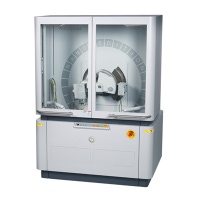Molecular structure
Multi-detector GPC for characterizing the structure of polymers and bio-molecules

Multi-detector GPC for characterizing the structure of polymers and bio-molecules

The physical and even the chemical properties of a polymer in a final manufactured product can be closely related to the polymer structure.
Types of polymer structure:
Multi-detector SEC can be used to determine a number of the factors that determine structure:
Structure is determined using a combination of an intrinsic viscosity detector that is sensitive to density, and a light scattering detector that provides molecular weight. These parameters are used to construct a Mark–Houwink plot from which a range of structural information can be deduced.
Acrylonitrile-butadiene copolymers, commonly called nitrile rubbers (NBR), are used widely for adhesive compounding, and gloves used for examination and cleaning.
The composition of the copolymers, the polymer cross-linking and branching as well as the molecular weight of NBR affect the macroscopic properties of NBR such as flexibility and puncture resistance.

Zetasizer Advance RangeBetter data. Faster results. No expert required. |

Empyrean Nano EditionVersatile X-ray scattering platform |
|
|---|---|---|
| Measurement type | ||
| Molecular structure | ||
| Molecular size | ||
| Molecular weight | ||
| Technology | ||
| Gel Permeation Chromatography | ||
| Size Exclusion Chromatography (SEC) | ||
| Dynamic Light Scattering | ||
| X-ray Diffraction (XRD) | ||